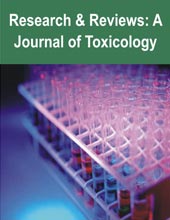[{“box”:0,”content”:”[if 992 equals=”Open Access”]
Open Access
n
[/if 992]n
n
n
n
n
- n t

n
Suresh Kumar, D. Varun, N.priyarekha, K.Hemakanth
[/foreach]
n
n
n[if 2099 not_equal=”Yes”]n
- [foreach 286] [if 1175 not_equal=””]n t
- , , ,
n[/if 1175][/foreach]
[/if 2099][if 2099 equals=”Yes”][/if 2099]nn
Abstract
nWhile the traditional medicines are derived from medicinal plants, minerals and organic
matter, the herbal drugs are prepared from medicinal plants only. This current research work
will be very beneficial in figuring out the Matricaria chamomilla leaves extract diuretic
effect by determining the ions and electrolyte excreted by the animals using ion selective
channel inhibition. The phytochemical screening results revealed that the after which it was
observed whether the alkaloids were absent due to absence of turbidity and/or precipitate
formation. The colour changed from violet to blue or green in some samples indicated the
presence of steroids. An interface with a reddish-brown coloration was formed in the
presence of terpenoids, as positive result. Red coloration identifies thepresence of flavonoids
(Shinado’s test). A colour change was observed in the test tube, which indicated in the
presence of tannins. Acute toxicity studies will be performed for the species Matricaria
chamomilla which may have not shown any toxicity, which human body could be proved
with the help of obtained study results. Diurectic activity of the herb Matricaria chamomilla
has some beneficial effect on the selected animals, the herb Matricaria chamomilla may be
selected for the further studies to prove its clinical relevancy.
n
Keywords: Diuresis Effect, Hydro Alcoholic Extract, Matricaria Chamomilla (Linn.), Phytochemical Studies
n[if 424 equals=”Regular Issue”][This article belongs to Research & Reviews: A Journal of Toxicology(rrjot)]
n
n
n
n
n
nn
nn[if 992 equals=”Open Access”] Full Text PDF Download[else] nvar fieldValue = “[user_role]”;nif (fieldValue == ‘indexingbodies’) {n document.write(‘Full Text PDF‘);n }nelse if (fieldValue == ‘administrator’) { document.write(‘Full Text PDF‘); }nelse if (fieldValue == ‘rrjot’) { document.write(‘Full Text PDF‘); }n else { document.write(‘ ‘); }n [/if 992] [if 379 not_equal=””]n
Browse Figures
n
n
n[/if 379]n
References
n[if 1104 equals=””]n
Tian, L.J.; Huang, T.K. Research on the development history of traditional Chinese
medicine. Chin. Arch. Tradit. Chin. Med. 2007, 4, 753–755. [Google Scholar]
[ CrossRef ]
2. Zhou, P. Traditional Chinese medicine. Comb. Chem. High Throughput Screen 2010, 13,
836. [Google Scholar] [ CrossRef ] [PubMed]
3. Ubessi, C.; Tedesco, S.B.; de Bona da Silva, C.; Baldoni, M.; Krysczun, D.K.;
Heinzmann, B.M.; Rosa, I.A.; Mori, N.C. Antiproliferative potential and phenolic
compounds of infusions and essential oil of chamomile cultivated with homeopathy. J.
Ethnopharmacol. 2019, 239, 111907. [Google Scholar] [ CrossRef ]
4. Wan, W.T.; Song, Y.J.; Xu, L.J.; Xiao, P.G.; Miao, J.H. Research Review and
Application Prospect Analysis of Matricaria. Mod. Chin. Med. 2019, 21, 260–265.
[Google Scholar] [ CrossRef ]
5. Singh, O.; Khanam, Z.; Misra, N.; Srivastava, M.K. Chamomile (Matricaria chamomilla
L.): An overview. Pharm. Rev. 2011, 5, 82–95. [Google Scholar] [ CrossRef ] [PubMed]
[Green Version]
6. Zhao, D.S.; Han, S.L.; Yi, Y.J.; Qiu, L.; Ren, L.J.; Li, X.X. Standard operating procedure
for standardized planting of local medicinal herb German chamomile. J. Anhui Agric.
Sci. 2015, 43, 70+85. [Google Scholar] [ CrossRef ]
7. Zhao, Y.F. Study on Chemical Composition and Quality Standard of Uyghur
Chamomile. Master’s Thesis, China Academy of Chinese Medical Sciences, Beijing,
China, 2018. [Google Scholar]
8. Fen, M.Y. Deciphering Chamomile Essential Oil. Chin. Cosmet. 2021, 12, 120–122.
[Google Scholar]
9. Petronilho, S.; Maraschin, M.; Delgadillo, I.; Coimbra, M.A.; Rocha, S.M.
Sesquiterpenic composition of the inflorescences of Brazilian chamomile (Matricaria
recutita L.): Impact of the agricultural practices. Ind. Crops Prod. 2011, 34, 1482–1490.
[Google Scholar] [ CrossRef ]
nn[/if 1104][if 1104 not_equal=””]n
- [foreach 1102]n t
- [if 1106 equals=””], [/if 1106][if 1106 not_equal=””],[/if 1106]
n[/foreach]
n[/if 1104]
nn
nn[if 1114 equals=”Yes”]n
n[/if 1114]
n
n

n
n
n
n
n
| Volume | |
| [if 424 equals=”Regular Issue”]Issue[/if 424][if 424 equals=”Special Issue”]Special Issue[/if 424] [if 424 equals=”Conference”][/if 424] | |
| Received | February 8, 2024 |
| Accepted | February 10, 2024 |
| Published |
n
n
n
n
n
nn function myFunction2() {n var x = document.getElementById(“browsefigure”);n if (x.style.display === “block”) {n x.style.display = “none”;n }n else { x.style.display = “Block”; }n }n document.querySelector(“.prevBtn”).addEventListener(“click”, () => {n changeSlides(-1);n });n document.querySelector(“.nextBtn”).addEventListener(“click”, () => {n changeSlides(1);n });n var slideIndex = 1;n showSlides(slideIndex);n function changeSlides(n) {n showSlides((slideIndex += n));n }n function currentSlide(n) {n showSlides((slideIndex = n));n }n function showSlides(n) {n var i;n var slides = document.getElementsByClassName(“Slide”);n var dots = document.getElementsByClassName(“Navdot”);n if (n > slides.length) { slideIndex = 1; }n if (n (item.style.display = “none”));n Array.from(dots).forEach(n item => (item.className = item.className.replace(” selected”, “”))n );n slides[slideIndex – 1].style.display = “block”;n dots[slideIndex – 1].className += ” selected”;n }n”}]

